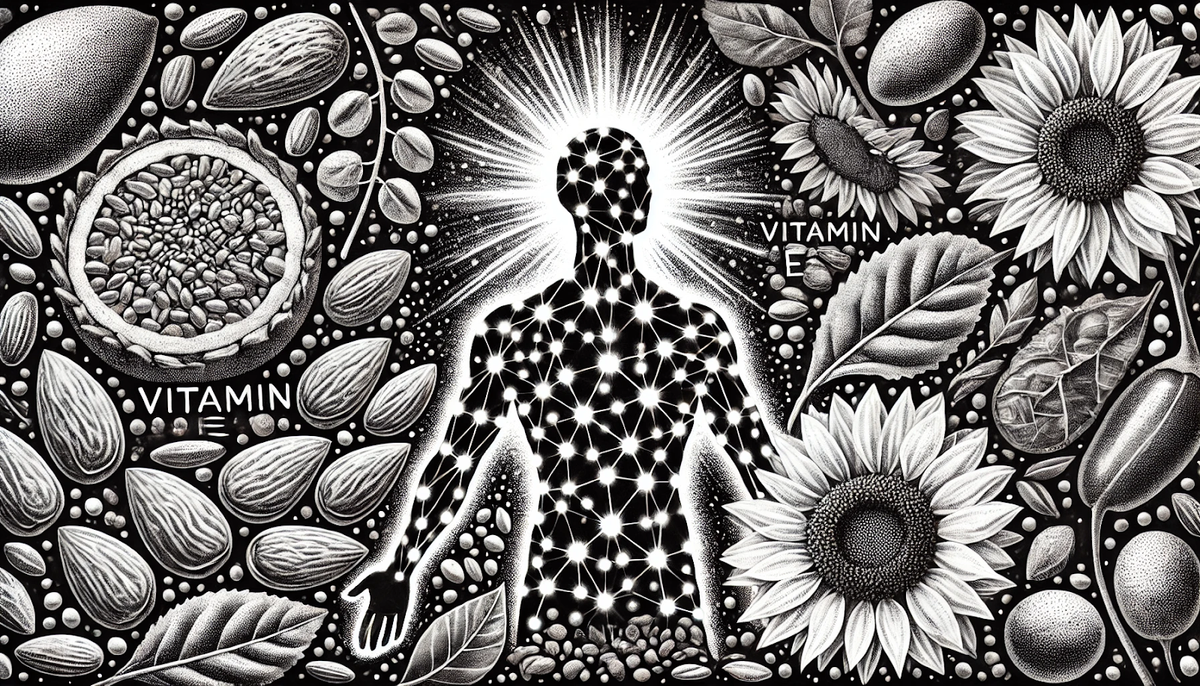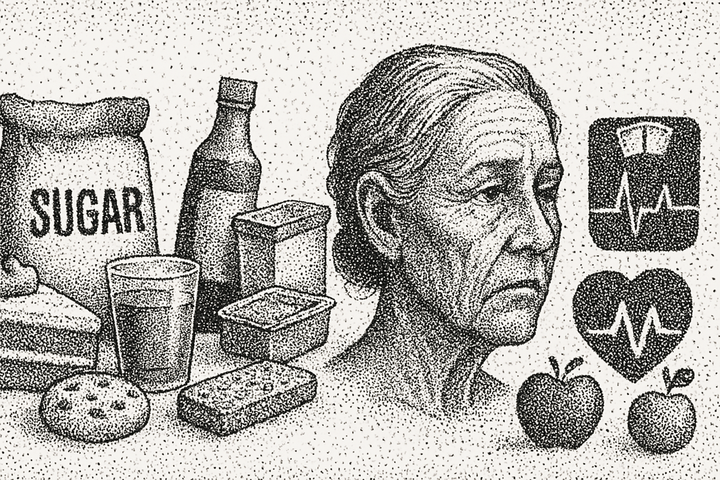Unlock the Power of Vitamin E: Your Essential Guide

In our quest for optimal health, we often hear about various vitamins and minerals, each playing a unique role in keeping our bodies functioning at their best. While some nutrients might grab more headlines, there's a quiet powerhouse that deserves our attention: Vitamin E. This essential nutrient works diligently behind the scenes, offering a multitude of benefits that contribute significantly to our overall well-being. Let's delve into the world of Vitamin E to understand what it is, what it does for us, and how we can ensure we're getting enough of this vital component of a healthy lifestyle.
What Exactly is Vitamin E?
At its core, Vitamin E is a fat-soluble nutrient, meaning it dissolves in fats and oils and can be stored in the body's fatty tissues and liver 1. This characteristic is important because it influences how our bodies absorb and utilize this vitamin. Primarily, Vitamin E acts as a potent antioxidant, playing a crucial role in protecting our cell membranes from damage caused by harmful substances known as free radicals 2. These free radicals are unstable molecules produced during normal bodily processes like metabolism, as well as from external sources such as pollution, cigarette smoke, and radiation 2.
It's also important to note that Vitamin E isn't a single entity but rather a group of eight related compounds. These are divided into two main categories: tocopherols (alpha, beta, gamma, and delta) and tocotrienols (alpha, beta, gamma, and delta) 3. Among these, alpha-tocopherol stands out as the most abundant and biologically active form in the human body 3. In fact, it's the only form that is officially recognized to meet our nutritional requirements. Our liver plays a key role here, preferentially utilizing and re-secreting only alpha-tocopherol to be distributed throughout the body 6. While other forms like gamma-tocopherol and tocotrienols also possess antioxidant properties and may offer unique health advantages, research in these areas is still ongoing 7. When you look at supplements, you might see Vitamin E listed as either RRR-alpha-tocopherol (d-alpha-tocopherol), which is the natural form, or all rac-alpha-tocopherol (dl-alpha-tocopherol), the synthetic version. The natural form is generally considered to have higher bioavailability, meaning our bodies can absorb and use it more effectively 6.
Why Your Body Loves Vitamin E: Key Functions
Vitamin E's primary role as a powerful antioxidant translates into a wide array of benefits for the body. It diligently works to protect our tissues from the damage inflicted by free radicals, which can harm our cells, tissues, and even our organs 2. This protective action is believed to play a significant role in preventing or delaying the onset of various chronic diseases that are often linked to free radical damage 1. Notably, Vitamin E helps to stop the production of harmful reactive oxygen species (ROS) that form when fats in our body undergo oxidation 6. This is particularly important for maintaining the integrity of cell membranes, which are largely composed of fats.
Beyond its antioxidant prowess, Vitamin E is also a vital supporter of our immune function 1. It helps to keep our immune system strong and resilient against invading viruses and bacteria. Research has shown that Vitamin E plays a crucial role in modulating our immune responses, particularly by influencing the function of T cells, which are essential for fighting infections 17. It achieves this by affecting the integrity of T cell membranes, their ability to transmit signals, and their capacity for cell division. This modulation can be particularly important in reducing the risk of infectious diseases, especially those affecting the respiratory system 19.
Furthermore, Vitamin E contributes to the health of our blood vessels 2. It aids in the formation of red blood cells and helps to widen blood vessels, which is crucial for preventing blood from clotting inappropriately inside them. This process involves increasing the expression of specific enzymes that suppress the metabolism of arachidonic acid, ultimately leading to an increased release of prostacyclin. Prostacyclin, in turn, helps to dilate blood vessels and inhibit the aggregation of platelets, promoting healthy blood flow 6.
In addition to these key functions, Vitamin E is also involved in several other important bodily processes. It assists the body in utilizing vitamin K, another fat-soluble vitamin essential for blood clotting 2. It participates in cell signaling, the intricate communication network between cells, as well as the regulation of gene expression, which controls the production of proteins within our cells 6. Moreover, cells rely on Vitamin E to interact with each other and carry out a multitude of their essential functions 2. Vitamin E also plays a role in inhibiting protein kinase C, an enzyme involved in the proliferation and differentiation of various cell types, including smooth muscle cells, platelets, and monocytes 6.
The Amazing Benefits of Vitamin E
Given its powerful antioxidant properties, Vitamin E is associated with a range of potential health benefits. Its ability to neutralize free radicals suggests a protective role against serious diseases, including heart disease and cancer 6. By scavenging these unstable molecules, Vitamin E may help to prevent the cellular damage that can contribute to the development of these conditions 6.
When it comes to heart health, population studies have indicated that individuals who consume diets rich in Vitamin E and other antioxidants may have a lower risk of developing heart disease 12. Some research even suggests that Vitamin E might help to lower levels of LDL cholesterol (often referred to as "bad" cholesterol) and reduce the likelihood of atherosclerosis, the hardening and narrowing of arteries 12. However, it's important to note that studies investigating the benefits of Vitamin E supplements for preventing heart disease have yielded mixed results, with some showing no benefit and even potential harm at high doses 5. This suggests that obtaining Vitamin E through dietary sources might be more beneficial for heart health than relying on supplements alone.
The potential link between Vitamin E and brain health is also an area of ongoing research. Some studies have indicated that high doses of Vitamin E might help to slow down the progression of Alzheimer's disease in individuals with mild to moderate forms of the condition 3. However, other research has not confirmed these findings 5. While observational studies have associated higher Vitamin E intake with a lower risk of dementia and Alzheimer's disease, clinical trials have not yet definitively shown a preventative effect with supplementation 5.
For skin health, Vitamin E is often touted for its benefits. Its antioxidant properties can help protect the skin from damage caused by free radicals, which can contribute to premature aging 17. Additionally, Vitamin E has hydrating qualities, helping the skin to absorb and retain moisture, which is particularly beneficial for those with dry skin 23. It may also play a role in strengthening the skin's protective barrier, reducing hyperpigmentation (dark spots), and promoting the turnover of skin cells 23. Some evidence suggests that topical application of Vitamin E might help to soothe sunburn and even fade acne scarring, although more research is needed to fully understand these effects 23.
Vitamin E is also believed to play a protective role in eye health. Its antioxidant action may help to shield eye cells from damage caused by free radicals, potentially reducing the risk of age-related macular degeneration (AMD) and cataracts 3. The Age-Related Eye Disease Study (AREDS) notably found that a combination of nutrients, including Vitamin E, helped some individuals with moderate AMD 13. Furthermore, some research suggests that the alpha-tocopherol form of Vitamin E, along with other antioxidants like lutein and zeaxanthin, might contribute to a lower risk of developing cataracts 13.
Finally, as mentioned earlier, Vitamin E is crucial for supporting a healthy immune system 17. It has been shown to enhance immune function and may help to reduce the risk of infections, particularly in older adults 17. Vitamin E supports the growth and function of T cells, which are essential for an effective immune response 17.
The Vitamin E Gap: Why Many Americans Fall Short
Despite the numerous benefits of Vitamin E and its presence in a variety of foods, a significant portion of the American population doesn't seem to be getting enough. It's estimated that over 90% of Americans do not consume sufficient dietary Vitamin E (specifically alpha-tocopherol) to meet the estimated average requirements 7. Data from the National Health and Nutrition Examination Survey (NHANES) between 2007 and 2010 revealed that a staggering 88.5% of the US population had intakes of Vitamin E below the recommended daily amount 33. Further surveys have indicated that around 90% of men and 96% of women do not even meet the Estimated Average Requirement (EAR) of 12 mg of alpha-tocopherol 31.
Several factors might contribute to this widespread inadequacy. One key reason could be the prevalence of energy-rich, nutrient-poor foods in the typical American diet 33. These foods often lack the essential vitamins and minerals our bodies need, including Vitamin E. Additionally, the popularity of low-fat diets might inadvertently limit the intake of Vitamin E, as it's a fat-soluble vitamin found in oily foods like nuts and vegetable oils 6. Another important point to consider is the form of Vitamin E most commonly found in the American diet. While vegetable oils like soybean, canola, and corn oil are sources of Vitamin E, they are often higher in gamma-tocopherol rather than the alpha-tocopherol that our bodies primarily utilize and that dietary recommendations are based on 6. This means that even if people are consuming vegetable oils, they might not be getting enough of the specific form of Vitamin E their bodies need most. Furthermore, the 2010 Dietary Guidelines for Americans didn't strongly emphasize the fact that Vitamin E can be relatively challenging to obtain solely through diet 31, potentially leading to lower public awareness about actively seeking out Vitamin E-rich foods.
Fueling Up with Vitamin E: Delicious Food Sources
The good news is that Vitamin E is readily available in a variety of delicious and nutritious foods. By incorporating these into our daily meals and snacks, we can significantly improve our intake of this essential nutrient. Key food groups that are excellent sources of Vitamin E include:
- Vegetable Oils: Think wheat germ oil, sunflower oil, safflower oil, corn oil, soybean oil, olive oil, canola oil, hazelnut oil, and almond oil 2.
- Nuts: Almonds, peanuts, hazelnuts, pine nuts, Brazil nuts, pistachios, pecans, and cashews are all good sources 2.
- Seeds: Sunflower seeds and pumpkin seeds are particularly rich in Vitamin E 2.
- Green Leafy Vegetables: Spinach, broccoli, beet greens, and collard greens can contribute to your Vitamin E intake 1.
- Fruits: Mangoes, kiwifruit, avocados, red bell peppers, and tomatoes also contain Vitamin E 6.
- Fortified Foods: Many breakfast cereals, fruit juices, margarines, and spreads have Vitamin E added to them 2.
To give you a better idea of the Vitamin E content in specific foods, here's a table with some examples:
Note: % Daily Value is based on a 15 mg recommendation for adults. Values may slightly vary based on the source.
Incorporating a variety of these foods into your daily diet is a delicious and effective way to boost your Vitamin E intake.
How Much is Enough? Understanding Your Daily Needs
The Recommended Daily Allowance (RDA) for Vitamin E (alpha-tocopherol) for adults (aged 14 years and older) is 15 mg per day 5. This recommendation applies to both men and women, including pregnant women. For breastfeeding women, the RDA is slightly higher at 19 mg per day 6. The RDA varies for children and infants based on their age, so it's important to consult reliable sources for specific recommendations for these age groups.
While getting enough Vitamin E is crucial, it's also important to be aware of the potential risks of taking too much, especially through supplements. The tolerable upper intake level (UL) for Vitamin E in adults is 1,000 mg per day from supplements, regardless of whether it's from natural or synthetic sources 3. Consuming high doses of supplemental Vitamin E can interfere with the body's absorption of vitamin K, potentially increasing the risk of bleeding, particularly in individuals who are already taking anticoagulant medications 5. Some studies have also suggested a possible link between long-term use of even lower doses of Vitamin E supplements (around 400 IU per day of synthetic Vitamin E) and an increased risk of prostate cancer in men 5. While Vitamin E toxicity (hypervitaminosis E) is relatively rare compared to other fat-soluble vitamins, exceeding the established upper limit is not advised 3. Symptoms of excessive Vitamin E intake can include nausea, diarrhea, stomach cramps, fatigue, weakness, headache, blurred vision, rash, bruising, and bleeding 5.
Conclusion
Vitamin E is an essential nutrient that plays a vital role in maintaining our overall health, primarily through its powerful antioxidant and immune-boosting properties. While many Americans may not be meeting the recommended daily intake through diet alone, the good news is that Vitamin E is readily available in a wide variety of delicious whole foods. By focusing on incorporating a diverse range of nuts, seeds, vegetable oils, and leafy greens into our daily meals, we can significantly improve our Vitamin E status. It's always wise to consult with a healthcare professional before starting any high-dose Vitamin E supplementation, especially if you have any underlying health conditions or are currently taking other medications. Making informed dietary choices is a cornerstone of a healthy lifestyle, and ensuring adequate Vitamin E intake is a valuable step towards supporting your long-term well-being.
Works cited
1. www.cancer.gov, accessed March 16, 2025, https://www.cancer.gov/publications/dictionaries/cancer-terms/def/vitamin-e#:~:text=A%20nutrient%20that%20the%20body,keep%20blood%20clots%20from%20forming.
2. Vitamin E: MedlinePlus Medical Encyclopedia, accessed March 16, 2025, https://medlineplus.gov/ency/article/002406.htm
3. Vitamin E - StatPearls - NCBI Bookshelf, accessed March 16, 2025, https://www.ncbi.nlm.nih.gov/books/NBK557737/
4. Definition of vitamin E - NCI Dictionary of Cancer Terms, accessed March 16, 2025, https://www.cancer.gov/publications/dictionaries/cancer-terms/def/vitamin-e
5. Vitamin E - Mayo Clinic, accessed March 16, 2025, https://www.mayoclinic.org/drugs-supplements-vitamin-e/art-20364144
6. Vitamin E - Health Professional Fact Sheet - NIH Office of Dietary Supplements, accessed March 16, 2025, https://ods.od.nih.gov/factsheets/VitaminE-HealthProfessional/
7. Vitamin E | Linus Pauling Institute - Oregon State University, accessed March 16, 2025, https://lpi.oregonstate.edu/mic/vitamins/vitamin-E
8. Vitamin E - Wikipedia, accessed March 16, 2025, https://en.wikipedia.org/wiki/Vitamin_E
9. There's More Than One Type of Vitamin E — The Study of Tocotrienol and Chronic Conditions, accessed March 16, 2025, https://www.todaysgeriatricmedicine.com/archive/SO19p24.shtml
10. Tocotrienols: Benefits, side effects, and risks - MedicalNewsToday, accessed March 16, 2025, https://www.medicalnewstoday.com/articles/319689
11. Vitamin E and Your Health - The Nutrition Source, accessed March 16, 2025, https://nutritionsource.hsph.harvard.edu/vitamin-e/
12. Vitamin E Benefits and Disease-Fighting Properties - Verywell Health, accessed March 16, 2025, https://www.verywellhealth.com/vitamin-e-7485267
13. Vitamin E: Benefits, Foods and Side Effects - All About Vision, accessed March 16, 2025, https://www.allaboutvision.com/eye-care/vision-health/nutrition/vitamin-e/
14. Vitamin E - Consumer - NIH Office of Dietary Supplements, accessed March 16, 2025, https://ods.od.nih.gov/factsheets/VitaminE-Consumer/
15. Vitamin E Information | Mount Sinai - New York, accessed March 16, 2025, https://www.mountsinai.org/health-library/supplement/vitamin-e
16. Health Encyclopedia - Vitamin E, accessed March 16, 2025, https://www.urmc.rochester.edu/encyclopedia/content?contenttypeid=19&contentid=vitamine
17. How Does Vitamin E Support Your Immune System? - BetterYou, accessed March 16, 2025, https://betteryou.com/blogs/everyday-health/vitamin-e-immune-system-support
18. Vitamin E: Uses and Benefits - Healthline, accessed March 16, 2025, https://www.healthline.com/health/all-about-vitamin-e
19. Regulatory role of vitamin E in the immune system and inflammation - PMC, accessed March 16, 2025, https://pmc.ncbi.nlm.nih.gov/articles/PMC7011499/
20. pmc.ncbi.nlm.nih.gov, accessed March 16, 2025, https://pmc.ncbi.nlm.nih.gov/articles/PMC7011499/#:~:text=Clinical%20relevance%20of%20vitamin%20E,allergic%20diseases%20such%20as%20asthma.
21. The Role of Vitamin E in Immunity - PMC, accessed March 16, 2025, https://pmc.ncbi.nlm.nih.gov/articles/PMC6266234/
22. Vitamin E Supplementation and Cardiovascular Health: A Comprehensive Review - PMC, accessed March 16, 2025, https://pmc.ncbi.nlm.nih.gov/articles/PMC10692867/
23. Vitamin E For Skin | Skincare Ingredients - NIVEA, accessed March 16, 2025, https://www.nivea.co.uk/advice/skin/vitamin-e-for-skin
24. Vitamin E Oil: Uses & Side Effects - Cleveland Clinic, accessed March 16, 2025, https://my.clevelandclinic.org/health/drugs/19804-vitamin-e-cream-or-oil
25. Vitamin E for Skin: Benefits and How to Use | Blog | Fresh Beauty, accessed March 16, 2025, https://www.fresh.com/us/stories/skincare-education/article-The-Skincare-and-Bodycare-Benefits-of-Vitamin-E.html
26. Vitamin E oil benefits and uses - MedicalNewsToday, accessed March 16, 2025, https://www.medicalnewstoday.com/articles/318168
27. Improving eyesight with a capital E: The litle-known benefits of a vitamin, accessed March 16, 2025, https://cms.illinois.gov/content/dam/soi/en/web/cms/benefits/stateemployee/bewell/documents/march2024/eyemed-march-web-content.pdf
28. Nutrition and Eye Health | Johns Hopkins Medicine, accessed March 16, 2025, https://www.hopkinsmedicine.org/health/wellness-and-prevention/nutrition-and-eye-health
29. The Importance of Zinc and Vitamin E for Your Eyesight - Longwood Eye & LASIK Center, accessed March 16, 2025, https://www.longwoodeye.com/the-importance-of-zinc-and-vitamin-e-for-your-eyesight/
30. Vitamin E and Vision - WebMD, accessed March 16, 2025, https://www.webmd.com/eye-health/vitamin-e-vision
31. Vitamin E Inadequacy in Humans: Causes and Consequences - PMC - PubMed Central, accessed March 16, 2025, https://pmc.ncbi.nlm.nih.gov/articles/PMC4188222/
32. Vitamin E Inadequacy in Humans: Causes and Consequences - ResearchGate, accessed March 16, 2025, https://www.researchgate.net/publication/269172329_Vitamin_E_Inadequacy_in_Humans_Causes_and_Consequences
33. Micronutrient Inadequacies in the US Population: an Overview | Linus Pauling Institute | Oregon State University, accessed March 16, 2025, https://lpi.oregonstate.edu/mic/micronutrient-inadequacies/overview
34. Vitamin E Deficiency - Disorders of Nutrition - Merck Manual Consumer Version, accessed March 16, 2025, https://www.merckmanuals.com/home/disorders-of-nutrition/vitamins/vitamin-e-deficiency
35. www.mayoclinic.org, accessed March 16, 2025, https://www.mayoclinic.org/drugs-supplements-vitamin-e/art-20364144#:~:text=Foods%20rich%20in%20vitamin%20E,cause%20nerve%20pain%20(neuropathy).
36. Vitamins and minerals - Vitamin E - NHS, accessed March 16, 2025, https://www.nhs.uk/conditions/vitamins-and-minerals/vitamin-e/
37. 30 Plus Foods That Are High in Vitamin E - Healthline, accessed March 16, 2025, https://www.healthline.com/nutrition/foods-high-in-vitamin-e
38. Vitamin E and your health - foods high in vitamin E | healthdirect, accessed March 16, 2025, https://www.healthdirect.gov.au/vitamin-e-and-your-health
39. Vitamin E Deficiency - StatPearls - NCBI Bookshelf, accessed March 16, 2025, https://www.ncbi.nlm.nih.gov/books/NBK519051/
40. Vitamin E in dermatology - PMC, accessed March 16, 2025, https://pmc.ncbi.nlm.nih.gov/articles/PMC4976416/




Comments ()